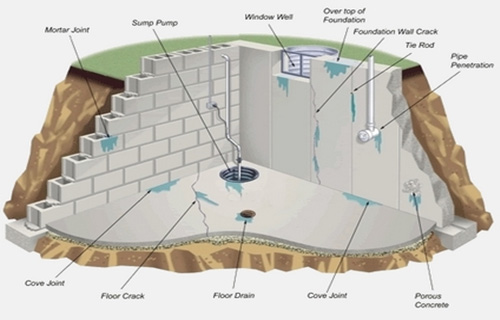Causes of Waterproofing, and How We Can Help
A prospective customer was recently asked, “What do you think is causing the problem?” After pausing a moment, he replied, “Water!”
He then asked, “What’s the solution?” and I replied, “Move to a high-rise!”
It is unfortunate that every home in Texas will, at some point, have a wet basement. It may take 2 years, 20 years, or maybe even 100 years, but regardless of when it happens, understanding the causes will allow you to understand the solutions.
“Basements are not designed to be waterproof…”
– Iowa State University, “Building Basements in Wet Locations” March 1994.
DISCLAIMER: This quote from an engineer does not apply to homes that are custom built by a great contractor who understands foundation engineering and waterproofing science, and then spends the money to install a system that will keep the basement dry for 100 years. We are such a company! We have the necessary know-how and experience to waterproof foundations and basements!
Ways in Which Water Enters Your Basement
Below is a diagram of a basement with common moisture problems, illustrating the various ways that water can enter your basement. The wall depicted on the left is a concrete block wall made of block, brick, or stone, bonded together with mortar joints or seams. The wall illustrated on the right is a poured (cast-in-place) or pre-cast solid concrete wall.

Water That Enters Through the Wall
Water can pass through a number of spots in a foundation wall, such as:
- foundation wall crack – simple or structural
- tie rod
- mortar joint
- concrete block (concrete blocks are not only hollow, they are porous and water accumulates inside the cores)
- tie rod (the metal pieces which originally held the forms together when the wall was poured or cast in place)
- window wells
- porous concrete
- pipe penetration – around and through pipes, which enter your basement through the wall (gas, sewage, water, cable, etc.)
- doorways, stairwells

Water That Enters Through the Floor:
Water can enter through a floor via a:
- cove, the joining or joint of the wall and the floor
- floor crack
- sump pit or well, which occurs when the sump pump fails
- floor drain, which can occur when the storm drain system backs up, or the floor drain has failed due to clogging
- pipe penetration – around and through pipes which enter your basement through the floor